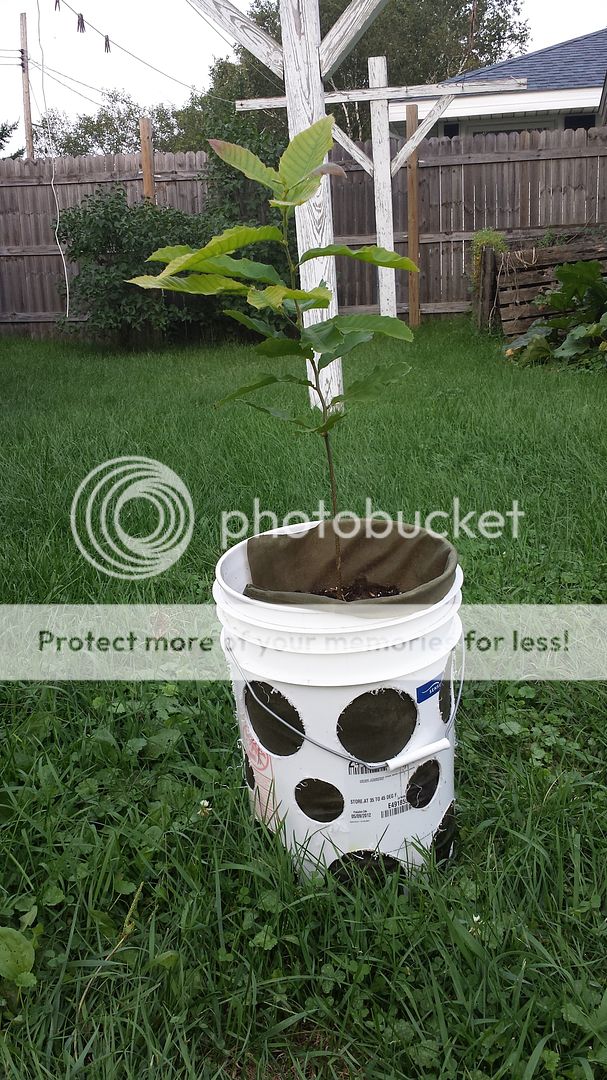Attention chestnut experts.
Throughout this past spring and summer, I've grown a bunch of chestnut seedlings. One problem I've been seeing is the occasional chestnut seeds that produce a single stem of top growth and then stall with a black tip. These seedlings vary in height, but are generally between 2" and 8" tall, with only small, undeveloped leaf bases. The seed doesn't send up additional stems and the existing stem doesn't grow even though I watch it carefully for several weeks. Other seedlings grow normally right beside these stalled "black tip" seedlings. In the end I throw the black tipped seedlings away when I transplant the healthy seedlings.
What is causing this "black tip" on my seedlings? Can someone tell me what I'm doing wrong?
How I plant: After the chestnut's radicle is around 1" long, I plant into a 5 gallon bucket filled about halfway with Fafard growing mix. I plant around a dozen sprouted seeds in each bucket and transplant them when they begin to interfere with the action of the bucket handle - 15-20"-ish. I transplanted the first 50 into tree tubes throughout my property; since then they all went into a small orchard that is fully enclosed by 6' tall, 1"x2" welded wire fence.
I've attached 3 photos to better describe what I tried to say above.



Throughout this past spring and summer, I've grown a bunch of chestnut seedlings. One problem I've been seeing is the occasional chestnut seeds that produce a single stem of top growth and then stall with a black tip. These seedlings vary in height, but are generally between 2" and 8" tall, with only small, undeveloped leaf bases. The seed doesn't send up additional stems and the existing stem doesn't grow even though I watch it carefully for several weeks. Other seedlings grow normally right beside these stalled "black tip" seedlings. In the end I throw the black tipped seedlings away when I transplant the healthy seedlings.
What is causing this "black tip" on my seedlings? Can someone tell me what I'm doing wrong?
How I plant: After the chestnut's radicle is around 1" long, I plant into a 5 gallon bucket filled about halfway with Fafard growing mix. I plant around a dozen sprouted seeds in each bucket and transplant them when they begin to interfere with the action of the bucket handle - 15-20"-ish. I transplanted the first 50 into tree tubes throughout my property; since then they all went into a small orchard that is fully enclosed by 6' tall, 1"x2" welded wire fence.
I've attached 3 photos to better describe what I tried to say above.









